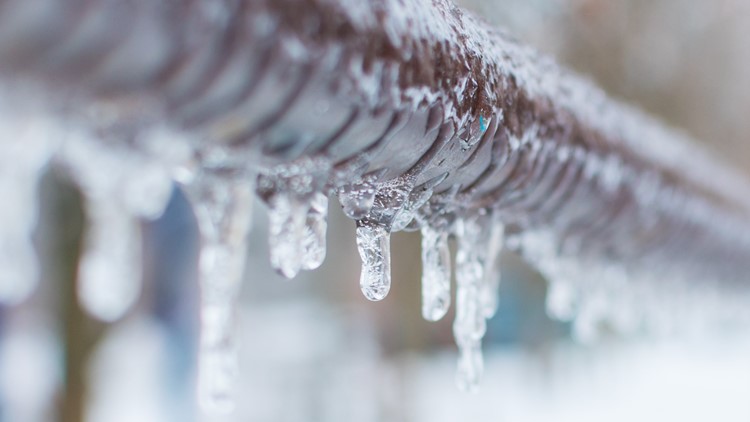What're your thoughts with regards to Helpful Tips to Prevent Frozen Pipes this Winter?

Winter can damage your pipes, specifically by freezing pipelines. Here's just how to prevent it from occurring and what to do if it does.
Intro
As temperatures drop, the danger of frozen pipes increases, potentially bring about expensive fixings and water damages. Understanding how to prevent icy pipes is critical for house owners in cool environments.
Prevention Tips
Protecting vulnerable pipes
Cover pipes in insulation sleeves or utilize warm tape to secure them from freezing temperature levels. Concentrate on pipelines in unheated or exterior locations of the home.
Home heating strategies
Maintain interior rooms adequately heated up, particularly areas with pipes. Open cupboard doors to enable warm air to circulate around pipelines under sinks.
Exactly how to determine icy pipes
Look for reduced water circulation from taps, unusual odors or noises from pipelines, and visible frost on revealed pipes.
Long-Term Solutions
Structural modifications
Take into consideration rerouting pipelines far from exterior wall surfaces or unheated areas. Include added insulation to attic rooms, basements, and crawl spaces.
Upgrading insulation
Purchase top notch insulation for pipelines, attic rooms, and wall surfaces. Proper insulation aids preserve regular temperature levels and lowers the danger of frozen pipes.
Securing Outdoor Plumbing
Garden pipes and outside faucets
Disconnect and drain yard pipes prior to winter. Install frost-proof spigots or cover outside taps with protected caps.
Understanding Frozen Pipes
What causes pipelines to freeze?
Pipes freeze when revealed to temperatures listed below 32 ° F (0 ° C) for prolonged durations. As water inside the pipelines freezes, it expands, taxing the pipeline walls and possibly causing them to break.
Dangers and problems
Frozen pipes can cause water system disruptions, residential property damages, and pricey repair work. Burst pipes can flooding homes and create substantial structural damage.
Signs of Frozen Piping
Determining icy pipelines early can avoid them from breaking.
What to Do If Your Pipes Freeze
Immediate actions to take
If you think frozen pipelines, maintain taps open up to soothe pressure as the ice thaws. Make use of a hairdryer or towels soaked in warm water to thaw pipelines slowly.
Conclusion
Avoiding icy pipes needs proactive actions and fast actions. By understanding the causes, indications, and preventive measures, home owners can shield their pipes during cold weather.
5 Ways to Prevent Frozen Pipes
Drain Outdoor Faucets and Disconnect Hoses
First, close the shut-off valve that controls the flow of water in the pipe to your outdoor faucet. Then, head outside to disconnect and drain your hose and open the outdoor faucet to allow the water to completely drain out of the line. Turn off the faucet when done. Finally, head back to the shut-off valve and drain the remaining water inside the pipe into a bucket or container. Additionally, if you have a home irrigation system, you should consider hiring an expert to clear the system of water each year.
Insulate Pipes
One of the best and most cost-effective methods for preventing frozen water pipes is to wrap your pipes with insulation. This is especially important for areas in your home that aren’t exposed to heat, such as an attic. We suggest using foam sleeves, which can typically be found at your local hardware store.
Keep Heat Running at 65
Your pipes are located inside your walls, and the temperature there is much colder than the rest of the house. To prevent your pipes from freezing, The Insurance Information Institute suggests that you keep your home heated to at least 65 degrees, even when traveling. You may want to invest in smart devices that can keep an eye on the temperature in your home while you’re away.
Leave Water Dripping
Moving water — even a small trickle — can prevent ice from forming inside your pipes. When freezing temps are imminent, start a drip of water from all faucets that serve exposed pipes. Leaving a few faucets running will also help relieve pressure inside the pipes and help prevent a rupture if the water inside freezes.
Open Cupboard Doors
Warm your kitchen and bathroom pipes by opening cupboards and vanities. You should also leave your interior doors ajar to help warm air circulate evenly throughout your home.
:strip_icc()/snow-outdoor-faucet-pipes-4af65d1e5e904fb1aa7bf74071fe5d89.jpg)
Do you like reading about How to prepare your home plumbing for winter weather? Give feedback below. We'd be glad to hear your thoughts about this piece. We are looking forward to see you back again later on. Don't hesitate to set aside a second to share this article if you enjoyed it. Thank you for being here. Please come visit our blog back soon.
Schedule An Appointment